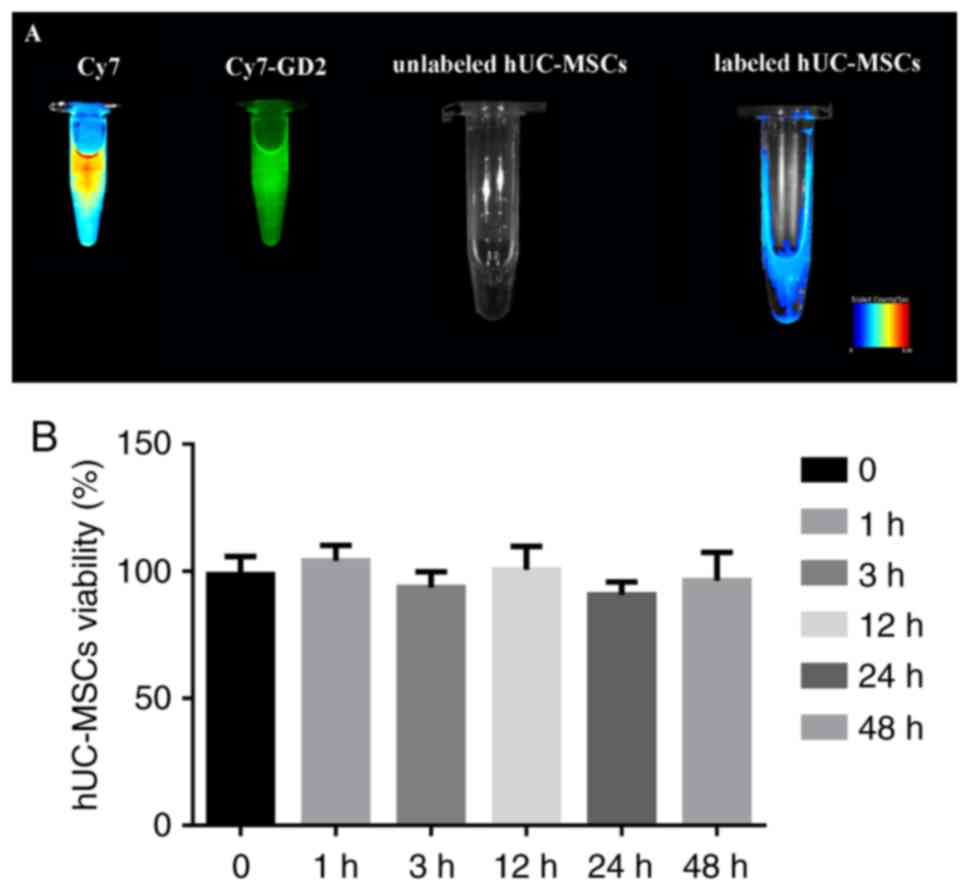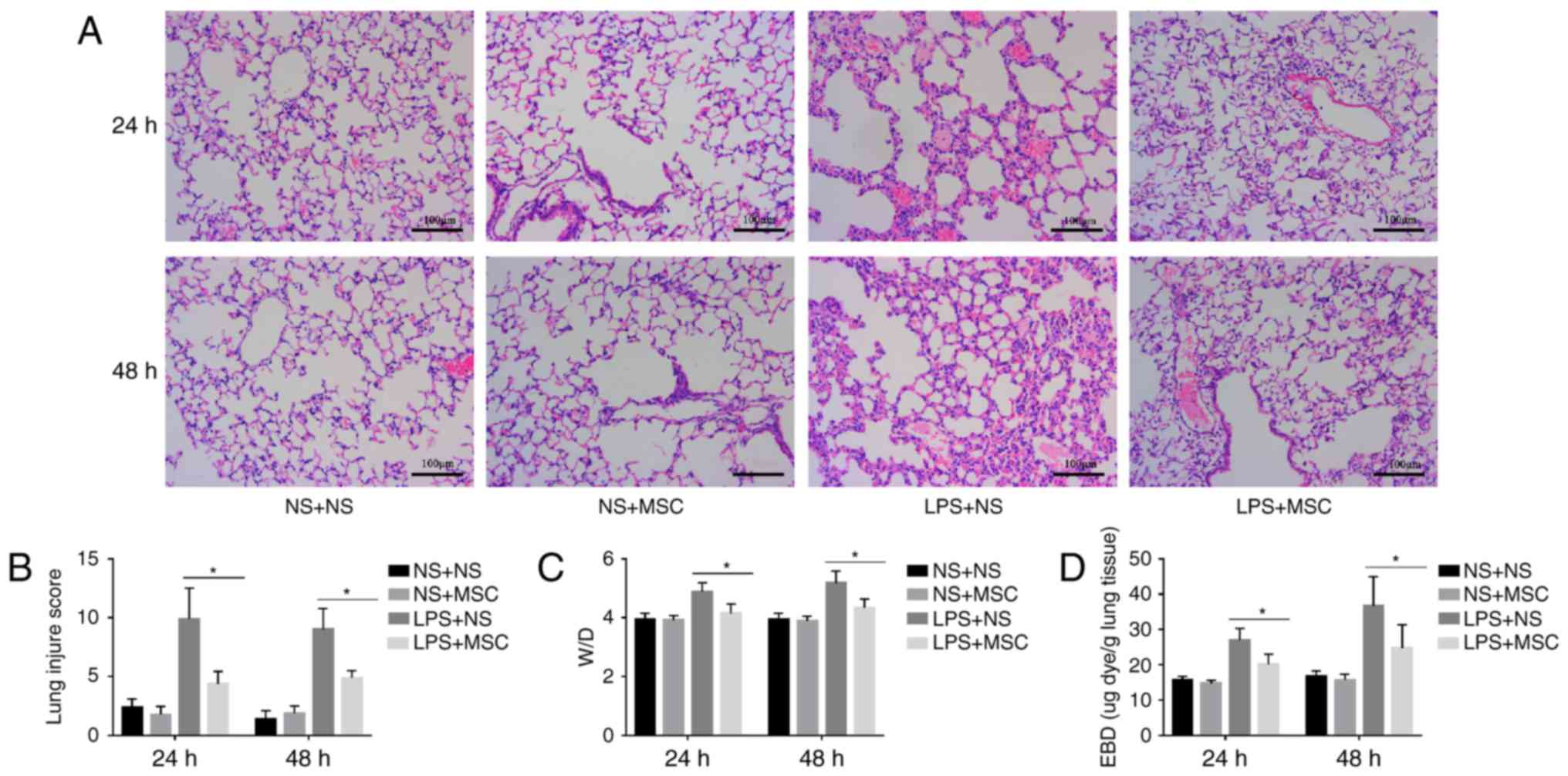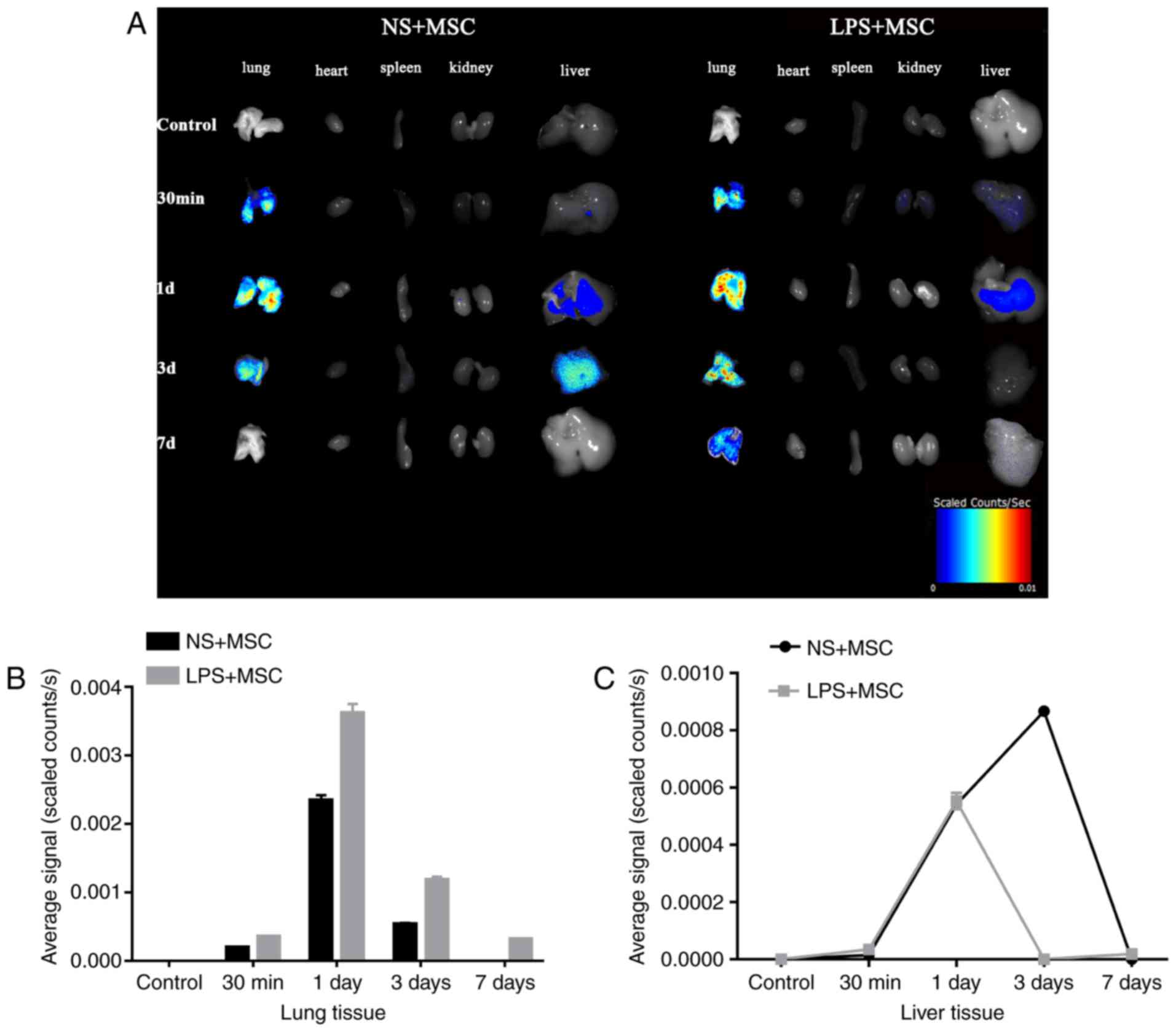|
1
|
ARDS Definition Task Force; Ranieri VM,
Rubenfeld GD, Thompson BT, Ferguson ND, Caldwell E, Fan E,
Camporota L and Slutsky AS: Acute respiratory distress syndrome:
The Berlin Definition. JAMA. 307:2526–2533. 2012.PubMed/NCBI
|
|
2
|
Bellani G, Laffey JG, Pham T, Fan E,
Brochard L, Esteban A, Gattinoni L, van Haren F, Larsson A, McAuley
DF, et al: Epidemiology, patterns of care, and mortality for
patients with acute respiratory distress syndrome in intensive care
units in 50 countries. JAMA. 315:788–800. 2016. View Article : Google Scholar : PubMed/NCBI
|
|
3
|
Zafar K: Incidence of acute respiratory
distress syndrome. JAMA. 316:3472016. View Article : Google Scholar : PubMed/NCBI
|
|
4
|
Papazian L, Forel JM, Gacouin A,
Penot-Ragon C, Perrin G, Loundou A, Jaber S, Arnal JM, Perez D,
Seghboyan JM, et al: Neuromuscular blockers in early acute
respiratory distress syndrome. N Engl J Med. 363:1107–1116. 2010.
View Article : Google Scholar : PubMed/NCBI
|
|
5
|
Sueblinvong V and Weiss DJ: Cell therapy
approaches for lung diseases: Current status. Curr Opin Pharmacol.
9:268–273. 2009. View Article : Google Scholar : PubMed/NCBI
|
|
6
|
Briel M, Meade M, Mercat A, Brower RG,
Talmor D, Walter SD, Slutsky AS, Pullenayegum E, Zhou Q, Cook D, et
al: Higher vs. lower positive end-expiratory pressure in patients
with acute lung injury and acute respiratory distress syndrome:
Systematic review and meta-analysis. JAMA. 303:865–873. 2010.
View Article : Google Scholar : PubMed/NCBI
|
|
7
|
Prockop DJ and Oh JY: Mesenchymal
stem/stromal cells (MSCs): Role as guardians of inflammation. Mol
Ther. 20:14–20. 2012. View Article : Google Scholar :
|
|
8
|
Lv FJ, Tuan RS, Cheung KM and Leung VY:
Concise review: The surface markers and identity of human
mesenchymal stem cells. Stem Cells. 32:1408–1419. 2014. View Article : Google Scholar : PubMed/NCBI
|
|
9
|
Akram KM, Samad S, Spiteri M and Forsyth
NR: Mesenchymal stem cell therapy and lung diseases. Adv Biochem
Eng Biotechnol. 130:105–129. 2013.
|
|
10
|
Ho MS, Mei SH and Stewart DJ: The
Immunomodulatory and therapeutic effects of mesenchymal stromal
cells for acute lung injury and sepsis. J Cell Physiol.
230:2606–2617. 2015. View Article : Google Scholar : PubMed/NCBI
|
|
11
|
Shalaby SM, El-Shal AS, Abd-Allah SH,
Selim AO, Selim SA, Gouda ZA, Abd El Motteleb DM, Zanfaly HE,
El-Assar HM and Abdelazim S: Mesenchymal stromal cell injection
protects against oxidative stress in Escherichia coli-induced acute
lung injury in mice. Cytotherapy. 16:764–775. 2014. View Article : Google Scholar : PubMed/NCBI
|
|
12
|
Shim SH, Xia C, Zhong G, Babcock HP,
Vaughan JC, Huang B, Wang X, Xu C, Bi GQ and Zhuang X:
Super-resolution fluorescence imaging of organelles in live cells
with photoswitchable membrane probes. Proc Natl Acad Sci USA.
109:13978–13983. 2012. View Article : Google Scholar : PubMed/NCBI
|
|
13
|
Chi C, Du Y, Ye J, Kou D, Qiu J, Wang J,
Tian J and Chen X: Intraoperative imaging-guided cancer surgery:
From current fluorescence molecular imaging methods to future
multi-modality imaging technology. Theranostics. 4:1072–1084. 2014.
View Article : Google Scholar : PubMed/NCBI
|
|
14
|
Hussain T and Nguyen QT: Molecular imaging
for cancer diagnosis and surgery. Adv Drug Deliv Rev. 66:90–100.
2014. View Article : Google Scholar
|
|
15
|
Kim JC, Lee JL, Yoon YS, Alotaibi AM and
Kim J: Utility of indocyanine-green fluorescent imaging during
robot-assisted sphincter-saving surgery on rectal cancer patients.
Int J Med Robot. 12:710–717. 2016. View
Article : Google Scholar
|
|
16
|
Chi C, Zhang Q, Mao Y, Kou D, Qiu J, Ye J,
Wang J, Wang Z, Du Y and Tian J: Increased precision of orthotopic
and metastatic breast cancer surgery guided by matrix
metalloproteinase-activatable near-infrared fluorescence probes.
Sci Rep. 5:141972015. View Article : Google Scholar : PubMed/NCBI
|
|
17
|
Sonn GA, Behesnilian AS, Jiang ZK,
Zettlitz KA, Lepin EJ, Bentolila LA, Knowles SM, Lawrence D, Wu AM
and Reiter RE: Fluorescent image-guided surgery with an
anti-prostate stem cell antigen (PSCA) diabody enables targeted
resection of mouse prostate cancer xenografts in real time. Clin
Cancer Res. 22:1403–1412. 2016. View Article : Google Scholar
|
|
18
|
Martinez C, Hofmann TJ, Marino R, Dominici
M and Horwitz EM: Human bone marrow mesenchymal stromal cells
express the neural ganglioside GD2: A novel surface marker for the
identification of MSCs. Blood. 109:4245–4248. 2007. View Article : Google Scholar : PubMed/NCBI
|
|
19
|
Xu J, Liao W, Gu D, Liang L, Liu M, Du W,
Liu P, Zhang L, Lu S, Dong C, Zhou B and Han Z: Neural ganglioside
GD2 identifies a subpopulation of mesenchymal stem cells in
umbilical cord. Cell Physiol Biochem. 23:415–424. 2009. View Article : Google Scholar : PubMed/NCBI
|
|
20
|
Jasmin, Torres AL, Nunes HM, Passipieri
JA, Jelicks LA, Gasparetto EL, Spray DC, Campos de Carvalho AC and
Mendez-Otero R: Optimized labeling of bone marrow mesenchymal cells
with superparamagnetic iron oxide nanoparticles and in vivo
visualization by magnetic resonance imaging. J Nanobiotechnology.
9:42011. View Article : Google Scholar : PubMed/NCBI
|
|
21
|
Camacho X, Machado CL, García MF, Gambini
JP, Banchero A, Fernández M, Oddone N, Bertolini Zanatta D, Rosal
C, Buchpiguel CA, et al: Technetium-99m- or Cy7-Labeled Rituximab
as an Imaging Agent for Non-Hodgkin Lymphoma. Oncology. 92:229–242.
2017. View Article : Google Scholar : PubMed/NCBI
|
|
22
|
Pan GZ, Yang Y, Zhang J, Liu W, Wang GY,
Zhang YC, Yang Q, Zhai FX, Tai Y, Liu JR, et al: Bone marrow
mesenchymal stem cells ameliorate hepatic ischemia/reperfusion
injuries via inactivation of the MEK/ERK signaling pathway in rats.
J Surg Res. 178:935–948. 2012. View Article : Google Scholar : PubMed/NCBI
|
|
23
|
Metildi CA, Kaushal S, Luiken GA, Talamini
MA, Hoffman RM and Bouvet M: Fluorescently labeled chimeric
anti-CEA antibody improves detection and resection of human colon
cancer in a patient-derived orthotopic xenograft (PDOX) nude mouse
model. J Surg Oncol. 109:451–458. 2014. View Article : Google Scholar
|
|
24
|
Park JY, Hiroshima Y, Lee JY, Maawy AA,
Hoffman RM and Bouvet M: MUC1 selectively targets human pancreatic
cancer in orthotopic nude mouse models. PLoS One. 10:e01221002015.
View Article : Google Scholar : PubMed/NCBI
|
|
25
|
Tai WL, Dong ZX, Zhang DD and Wang DH:
Therapeutic effect of intravenous bone marrow-derived mesenchymal
stem cell transplantation on early-stage LPS-induced acute lung
injury in mice. Nan Fang Yi Ke Da Xue Xue Bao. 32:283–290.
2012.PubMed/NCBI
|
|
26
|
Li J, Li D, Liu X, Tang S and Wei F: Human
umbilical cord mesenchymal stem cells reduce systemic inflammation
and attenuate LPS-induced acute lung injury in rats. J Inflamm
(Lond). 9:332012. View Article : Google Scholar
|
|
27
|
He H, Liu L, Chen Q, Liu A, Cai S, Yang Y,
Lu X and Qiu H: Mesenchymal stem cells overexpressing
angiotensin-converting enzyme 2 rescue lipopolysaccharide-induced
lung injury. Cell Transplant. 24:1699–1715. 2015. View Article : Google Scholar
|
|
28
|
Zhang Y, Fan S, Yao Y, Ding J, Wang Y,
Zhao Z, Liao L, Li P, Zang F and Teng GJ: In vivo, near-infrared
imaging of fibrin deposition in thromboembolic stroke in mice. PLoS
One. 7:e302622012. View Article : Google Scholar
|
|
29
|
Wang XY, Ju S, Li C, Peng XG, Chen AF, Mao
H and Teng GJ: Non-invasive imaging of endothelial progenitor cells
in tumor neovascularization using a novel dual-modality
paramagnetic/near-infrared fluorescence probe. PLoS One.
7:e505752012. View Article : Google Scholar : PubMed/NCBI
|
|
30
|
Yin J, Swartz TE, Zhang J, Patapoff TW,
Chen B, Marhoul J, Shih N, Kabakoff B and Rahimi K: Validation of a
spectral method for quantitative measurement of color in protein
drug solutions. PDA J Pharm Sci Technol. 70:382–391. 2016.
View Article : Google Scholar : PubMed/NCBI
|
|
31
|
Garbern JC and Lee RT: Cardiac stem cell
therapy and the promise of heart regeneration. Cell Stem Cell.
12:689–698. 2013. View Article : Google Scholar : PubMed/NCBI
|
|
32
|
Yu DX, Marchetto MC and Gage FH:
Therapeutic translation of iPSCs for treating neurological disease.
Cell Stem Cell. 12:678–688. 2013. View Article : Google Scholar : PubMed/NCBI
|
|
33
|
Soleimani M and Nadri S: A protocol for
isolation and culture of mesenchymal stem cells from mouse bone
marrow. Nat Protoc. 4:102–106. 2009. View Article : Google Scholar : PubMed/NCBI
|
|
34
|
Lee M, Jeong SY, Ha J, Kim M, Jin HJ, Kwon
SJ, Chang JW, Choi SJ, Oh W, Yang YS, et al: Low immunogenicity of
allogeneic human umbilical cord blood-derived mesenchymal stem
cells in vitro and in vivo. Biochem Biophys Res Commun.
446:983–989. 2014. View Article : Google Scholar : PubMed/NCBI
|
|
35
|
El Omar R, Beroud J, Stoltz JF, Menu P,
Velot E and Decot V: Umbilical cord mesenchymal stem cells: The new
gold standard for mesenchymal stem cell-based therapies. Tissue Eng
Part B Rev. 20:523–544. 2014. View Article : Google Scholar : PubMed/NCBI
|
|
36
|
Maron-Gutierrez T, Silva JD, Asensi KD,
Bakker-Abreu I, Shan Y, Diaz BL, Goldenberg RC, Mei SH, Stewart DJ,
Morales MM, et al: Effects of mesenchymal stem cell therapy on the
time course of pulmonary remodeling depend on the etiology of lung
injury in mice. Crit Care Med. 41:e319–333. 2013. View Article : Google Scholar : PubMed/NCBI
|
|
37
|
Tong L, Zhou J, Rong L, Seeley EJ, Pan J,
Zhu X, Liu J, Wang Q, Tang X, Qu J, et al: Fibroblast Growth
Factor-10 (FGF-10) mobilizes lung-resident mesenchymal stem cells
and protects against acute lung injury. Sci Rep. 6:216422016.
View Article : Google Scholar : PubMed/NCBI
|
|
38
|
Nguyen PK, Riegler J and Wu JC: Stem cell
imaging: From bench to bedside. Cell Stem Cell. 14:431–444. 2014.
View Article : Google Scholar : PubMed/NCBI
|
|
39
|
Wu C, Li J, Pang P, Liu J, Zhu K, Li D,
Cheng D, Chen J, Shuai X and Shan H: Polymeric vector-mediated gene
transfection of MSCs for dual bioluminescent and MRI tracking in
vivo. Biomaterials. 35:8249–8260. 2014. View Article : Google Scholar : PubMed/NCBI
|
|
40
|
Triphan SM, Breuer FA, Gensler D, Kauczor
HU and Jakob PM: Oxygen enhanced lung MRI by simultaneous
measurement of T1 and T2 * during free breathing using ultrashort
TE. J Magn Reson Imaging. 41:1708–1714. 2015. View Article : Google Scholar
|
|
41
|
Gu E, Chen WY, Gu J, Burridge P and Wu JC:
Molecular imaging of stem cells: Tracking survival,
biodistribution, tumorigenicity, and immunogenicity. Theranostics.
2:335–345. 2012. View Article : Google Scholar : PubMed/NCBI
|
|
42
|
Herberts CA, Kwa MS and Hermsen HP: Risk
factors in the development of stem cell therapy. J Transl Med.
9:292011. View Article : Google Scholar : PubMed/NCBI
|
|
43
|
Feng T, Ai X, Ong H and Zhao Y:
Dual-responsive carbon dots for tumor extracellular
microenvironment triggered targeting and enhanced anticancer drug
delivery. ACS Appl Mater Interfaces. 8:18732–18740. 2016.
View Article : Google Scholar : PubMed/NCBI
|
|
44
|
Landau MJ, Gould DJ and Patel KM: Advances
in fluorescent-image guided surgery. Ann Transl Med. 4:3922016.
View Article : Google Scholar : PubMed/NCBI
|
|
45
|
Lin X, Zhu H, Luo Z, Hong Y, Zhang H, Liu
X, Ding H, Tian H and Yang Z: Near-infrared fluorescence imaging of
non-Hodgkin's lymphoma CD20 expression using Cy7-conjugated
obinutuzumab. Mol Imaging Biol. 16:877–887. 2014. View Article : Google Scholar : PubMed/NCBI
|
|
46
|
Wang YY, Li XZ and Wang LB: Therapeutic
implications of mesenchymal stem cells in acute lung injury/acute
respiratory distress syndrome. Stem Cell Res Ther. 4:452013.
View Article : Google Scholar : PubMed/NCBI
|
|
47
|
Zhao YD, Ohkawara H, Vogel SM, Malik AB
and Zhao YY: Bone marrow-derived progenitor cells prevent
thrombin-induced increase in lung vascular permeability. Am J
Physiol Lung Cell Mol Physiol. 298:L36–L44. 2010. View Article : Google Scholar :
|
|
48
|
Qin ZH, Xu JF, Qu JM, Zhang J, Sai Y, Chen
CM, Wu L and Yu L: Intrapleural delivery of MSCs attenuates acute
lung injury by paracrine/endocrine mechanism. J Cell Mol Med.
16:2745–2753. 2012. View Article : Google Scholar : PubMed/NCBI
|
|
49
|
Sohni A and Verfaillie CM: Mesenchymal
stem cells migration homing and tracking. Stem Cells Int.
2013:1307632013. View Article : Google Scholar : PubMed/NCBI
|
|
50
|
Yamada M, Kubo H, Kobayashi S, Ishizawa K,
Numasaki M, Ueda S, Suzuki T and Sasaki H: Bone marrow-derived
progenitor cells are important for lung repair after
lipopolysaccharide-induced lung injury. J Immunol. 172:1266–1272.
2004. View Article : Google Scholar : PubMed/NCBI
|
|
51
|
Liu L, He H, Liu A, Xu J, Han J, Chen Q,
Hu S, Xu X, Huang Y, Guo F, et al: Therapeutic effects of bone
marrow-derived mesenchymal stem cells in models of pulmonary and
extrapulmonary acute lung injury. Cell Transplant. 24:2629–2642.
2015. View Article : Google Scholar : PubMed/NCBI
|
|
52
|
Beckett T, Loi R, Prenovitz R, Poynter M,
Goncz KK, Suratt BT and Weiss DJ: Acute lung injury with endotoxin
or NO2 does not enhance development of airway epithelium from bone
marrow. Mol Ther. 12:680–686. 2005. View Article : Google Scholar : PubMed/NCBI
|
|
53
|
Mei SH, McCarter SD, Deng Y, Parker CH,
Liles WC and Stewart DJ: Prevention of LPS-induced acute lung
injury in mice by mesenchymal stem cells overexpressing
angiopoietin 1. PLoS Med. 4:e2692007. View Article : Google Scholar : PubMed/NCBI
|













